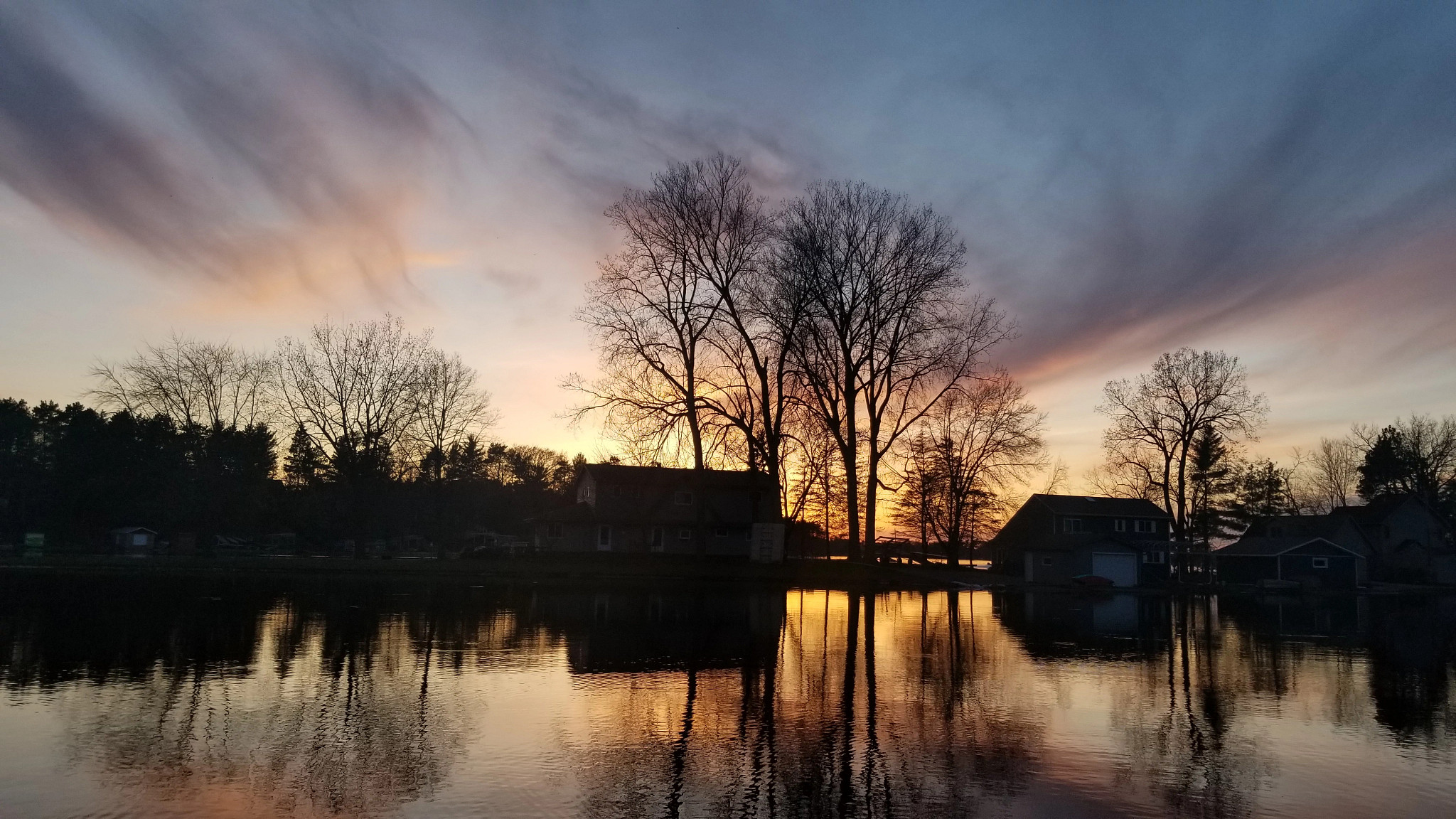Contact: Craig Czarnecki, Air Program Outreach Coordinator
Craig.Czarnecki@wisconsin.gov or 608-250-0945
May Is National Clean Air Month
DNR Taking Positive Steps To Reduce Air Emissions And Improve Air Quality
 Recent studies show that 95% of Wisconsinites live in areas meeting all federal air quality standards.
Photo credit: Wisconsin DNR
Recent studies show that 95% of Wisconsinites live in areas meeting all federal air quality standards.
Photo credit: Wisconsin DNR
MADISON, Wis. – May is Clean Air Month and there is much to celebrate at the Wisconsin Department of Natural Resources (DNR), including the positive steps toward reducing air emissions and improving air quality across the state. And it's working. Recent studies show that 95% of Wisconsinites live in areas meeting all federal air quality standards.
Clean air is important to everyone. Poor air quality can affect people of all ages, especially those sensitive to air pollution, including people with asthma or heart conditions, people who work and exercise outdoors, and older adults and children.
The DNR works closely with the U.S. Environmental Protection Agency (EPA), research and scientific organizations, businesses and non-profits to reduce air emissions and improve air quality across the state. Reducing emissions from things like vehicles and electric generation utilities play a large role in improving air quality.
And the public is helping too. Wisconsinites are using low-cost air quality sensors to track air quality closer to home.
“Using these low-cost sensors enables citizens to monitor and track air quality in their own backyards, empowering them to provide information and create awareness in their local communities,” said Gail Good, DNR Air Program Director.
The DNR recently conducted a study comparing low-cost air quality sensors with the DNR’s federally-approved air quality monitors and created tools and correction factors to better align citizen sensor data with the DNR’s data. Sensor information, along with tools to help the public get involved in air quality monitoring, are available on the DNR’s Air Monitoring Sensors webpage.
Other recent DNR efforts to enhance customer service and protect the health and environment of Wisconsinites include:
- Permitting And Compliance Assistance – The Air Program’s permit and compliance engineers write and review air permits, and conduct compliance inspections to ensure the more than 2,800 permitted facilities in Wisconsin are meeting federal Clean Air Act requirements. In 2020, Air Program engineers undertook several initiatives to improve the quality and clarity of permits and provide additional compliance assistance. Their hard work helps keep businesses across the state in operation and compliant with requirements, while also protecting the state’s air quality.
- Air Quality Trends Report – The program released the most recent annual Air Quality Trends report in October 2020. The report includes air monitoring data through 2019 and shows overall air quality in Wisconsin continues to improve. Since the early 2000s, fine particle concentrations have dropped more than 35%, while emissions of ozone-forming pollutants like nitrogen oxides (NOx) and volatile organic compounds (VOCs) dropped 63% and 58%, respectively. These improvements are thanks to the implementation of a variety of federal and state pollution control programs, and cleaner burning and more efficient fuel combustion from both highway vehicles and electric utilities.
- Enhanced Ozone Monitoring – In addition to the DNR’s 30 stationary air quality monitors across the state, the department has unleashed several other cutting-edge techniques to tackle the long-standing ground-level ozone challenges impacting areas along Wisconsin’s Lake Michigan shoreline. Using Raspberry Pi micro-computers, a mobile air monitoring lab and vertical air column monitoring techniques, the DNR’s Air Program is paving the way nationally for new ozone monitoring techniques and tools. The program also partners with the University of Wisconsin-Madison, NASA, the EPA and the Lake Michigan Air Directors Consortium (LADCO), a collaborative of Great Lakes states, to further expand the ozone research effort.
- Per- and Polyfluoroalkyl Substances (PFAS) – PFAS are a large group of human-made chemicals used in industrial processes and consumer products worldwide since the 1950s. Exposure to certain PFAS compounds may increase the risk of adverse health effects. The governor’s 2021-23 biennial budgetunveiled in February proposes significant resources for the monitoring and testing of PFAS, including over $20 million over the next two years for assistance and resources to local communities that are impacted by PFAS contamination, aiding local fire departments in disposing of PFAS foam and adding additional DNR staff to implement the Wisconsin PFAS Action Council's action plan. The DNR has undertaken several measures to mitigate PFAS pollution, including establishing the Wisconsin PFAS Action Council (WisPAC) in 2020 and spearheading the creation of the statewide PFAS Action Plan. The plan includes 25 action items centered around four guiding principles: environmental justice, health equity, innovation and pollution prevention.
To get kids involved in the air quality celebration, the DNR’s 10th annual Air, Air Everywhere poetry contest is underway. The department is accepting entries from Wisconsin’s third, fourth and fifth grade students through May 7. Winners will be announced at the end of the month. The three winning poems will be posted to the program’s Air, Air Everywhere poetry contest webpage.
The DNR offers a variety of ways to stay up-to-date on the current air quality. Users can download the free WisconsinAQM mobile app to receive air quality updates from anywhere using their mobile device. The app includes an interactive map of near real-time data from the state’s air monitoring network, individual monitoring station reports, weather information and more. Download in the Apple App Store or the Google Play Store.
The public can also subscribe to receive Air Quality news and notices straight to their email inboxes. Visit the DNR’s Clean Air Month webpage for additional resources and information.

